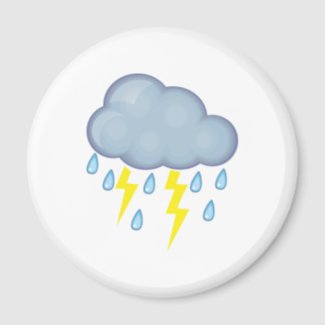Author: K.McAvoy
We have all no doubt played with magnets and a large proportion of us will not have understood why they work the way they do. This article explains the history of magnets, gives you some fun facts about them and hopefully will leave you somewhat enlightened afterwards.
MAGNETISM
There are important relationships between the laws of magnetism and the laws of electrical currents. Generation and transmission of large amounts of electrical energy on an economical basis is one of the most practical of these relationships. A high-speed digital computer is also an example, as well as the meter that measures the amount of electrical power used in your home. Since magnetism is so important to the field of electricity, you need to be familiar with its principles.
History and Definition
The knowledge of magnetism is very old. The early Greeks knew that certain stones (lodestones), found in the district of Magnesia in Asia Minor, had the apparent magic property of attracting small bits of iron. The reason was the ore in these stones, Fe3O4, called magnetite for the region magnesia. Soon any substance that possessed the property of attracting bits of iron was called a magnet. Attracted substances are known as magnetic substances. The phenomenon associated with magnets and magnetic materials is known as magnetism. Magnets can also be man-made. You do it by stroking a steel bar with one end of a lodestone or a magnet or by placing a steel bar in a coil of wire through which an electric current is passed.
Forces Between Poles
If iron filings were sprinkled over a permanent magnet, the greatest concentration of filings would be seen near the end of the magnet with practically none near the center. The regions near the ends of the bar are called the poles of the magnet, and the line joining the two poles is known as the magnet's magnetic axis. If a bar is suspended horizontally by a string or mounted on a pivot, it will line up in roughly a north-south direction.
Because one end of the bar magnet will always point north, the pole that tends to seek the magnetic north is called the North Pole (N). The other, which tends to seek the magnetic south, is called the South Pole (S). Thus, each end of all bar magnets may be marked as north poles or south poles. Also, if you mounted bar magnets on pivots so that they were free to move, you would find that like poles of two magnets would repel each other, whereas unlike poles would attract each other. By using long, slender, magnetized needles, the north and south poles would be sufficiently separated from each other so that the magnitude of the forces between individual poles could be measured. This was first done by the French physicist Charles A. Coulomb in 1785. By suspending a long needle from a brass wire attached to a graduated scale, he was able to determine how much mechanical torque had to be applied to hold the needle in its zero position when another long magnetic needle was brought near it. Coulomb determined that the force of repulsion between two north poles was inversely proportional to the square of the distance between them. By experimenting with various magnets, he was able to demonstrate that different magnets, when at the same distance, from the suspended magnet, produced different forces. He was able to assign to each magnet a definite pole strength, relative to a standard magnet.
Magnetic Fields
Characteristics
From the preceding discussion, you have seen that forces act on bar magnets and magnetic materials brought into the surrounding region of another bar magnet. Remember this as you learn the concept of a magnetic field, which is a region wherein magnetic forces act. A magnetic field surrounds a bar magnet and permeates it. You can see this by placing a glass plate over a bar magnet and sprinkling iron filings on the glass. By tapping the glass, the iron filings will align themselves with the field and will form chains between the north and south poles of the magnet. The chains, referred to as magnetic lines of force, are lines indicating the direction along which a small magnetic compass tends to align itself. Also, it can be seen that the concentrations of iron filings are greatest where the magnetic field is most intense. They have a definite direction and may be thought of as leaving the North Pole and re-entering the South Pole, and then continuing through the magnet from the South Pole to the North Pole.
Although magnetic lines of force are intangible, they have the following six properties:
1. They are continuous and always form closed loops.
2. They have a tension (along the direction of the lines) which tends to shorten them. Therefore, when two opposing poles are brought near each other, the lines of force existing between them are brought closer together.
3. They never ever cross one another.
4. They are conducted by all materials.
5. When from like poles, they tend to push one another apart when they are pushed towards each other.
6. They concentrate in magnetic materials.
This article has been put together by the distance learning organisation Start Learning who are experts in home study. If you want to find out more about Fundamentals of Electricity or many other distance learning courses please browse their website: Start Learning
A good way to find out more about Fundamentals of Electricity is to sign up for a distance learning course on the subject. By studying in your free time and pace, you can gain the necessary knowledge while tailoring it to suit your schedule.
Kerrana McAvoy
Academic Director – Start Learning
Start Learning Blog
Article Source: http://www.articlealley.com/magnets--fun-facts-2046234.html
About the Author:



No comments:
Post a Comment
Note: Only a member of this blog may post a comment.